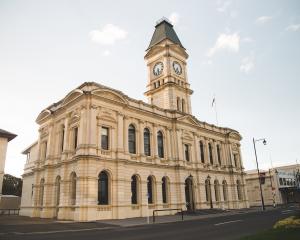New Zealand falcon advocate Donna Falconer believes in giving credit where it is due, particularly when it comes to her favourite native bird.
While not too keen to see the expansion of dairying into the high country, the falcon's home, she recognises dairy farms are providing new habitat and a ready food supply for the birds, listed as ''near threatened''.
That is, after discovering an adult male falcon (karearea), possibly with a partner, has made the Little Ben dairy farm, near Omarama and next to the Ahuriri River, its home.
''It's a good haven because it's safe. The owners are aware it's there and very protective,'' she said.
''Rather than ruffling the feathers of environmentalists or others from the anti-dairy lobby, Little Ben has acquired the services of this New Zealand falcon who is literally ruffling the feathers of the local sparrow population.
''Since the conversion of this land to dairying three years ago, the introduction of large quantities of feed barley has resulted in a significant increase in the number of sparrows on the property, attracting New Zealand's only endemic raptor [the falcon],'' Dr Falconer said.
''It is very encouraging to see such a positive environmental impact involving an endangered species on a land use that has been at the centre of so much debate and controversy locally. Fingers crossed that more of the recent wave of dairy conversions will attract in their own falcons who really do set the benchmark for live prey capture.''
A geologist with a PhD, and a photographer, she has been connecting with and photographing the local species, the eastern falcon, from her Twizel home since 2007. Along with another falcon advocate, she has established a website featuring the birds.
She also hopes to establish a charitable trust for them.
Dr Falconer said dairy farms like Little Ben that backed on to range country were clearly capable of providing an ideal envir-onment for the falcon with an abundant source of prey (small birds and mice), lack of any chemical contaminants that might poison prey and a multitude of suitable hunting perches.
''It is hoped because of the constant supply of prey, Little Ben will hang around and establish his home territory on the property rather than spend most of his time in the nearby hills,'' she said.
His hunting prowess was particularly evident in the highly modified environment as he circled tightly around small poplar trees chasing sparrows in the shelter belts, not only weaving in and out of trees but flying between the wires of the multitudes of electric fences. Falcons were not deterred by anything when hunting, flying into and through vegetation, into buildings and even under large trucks in the pursuit of prey.
Little Ben was often found perched on the tall grain silo in the yard, or on the many power poles, and even in the rafters of the dairy shed.
''This inherent curiosity is a particular trait that separates falcons from hawks, which they are often mistaken with,'' Dr Falconer said.
Two falcons were spotted last breeding season, so, hopefully, Little Ben had an established mate and they would both frequent the property, possibly nesting in an artificial structure rather than the usual sites in the hills.
While the falcon was not common on the plains of the Mackenzie Basin, there were strong populations in some areas along the range fronts bordering the Mackenzie and Omarama Basins.











